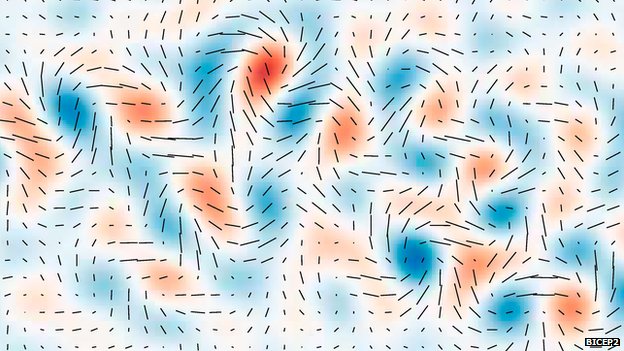Peeking Under the Cosmic Veil

Speaker(s): Alan Guth and John Kovac, via edited video of a colloquium at Harvard from 25 March 2014
“For decades circumstantial evidence from observational cosmology has suggested that our universe may have started with a bang — an initial violent explosion and expansion of space known as inflation. As the universe expanded, it cooled down from an initial super hot and opaque primordial soup of mass and energy. At some point around 300,000 years after the initial bang, temperatures dipped low enough to have the initial soup condense into atoms and molecules, and as a result the stuff filling the universe became suddenly transparent to light. From that point onward light could travel for billions of years to bring us images of our universe at various stages of its 14-billion-year-long history. This, however, still leaves the all-important initial inflationary years in darkness: light cannot travel through the opaque early primordial plasma. Ripples of space known as gravitational waves can, however, slice through anything—like a knife through butter—carrying with them an image of our universe when it was only a few hundred thousand years young. This epoch is an uncharted realm: when temperatures get so high, a more unified, profound, and still unknown framework of the laws of physics is expected to hold.
The recent announcement from the BICEP2 experiment purports to have recorded the first imprints of gravitational waves in the image of the primordial plasma. As these results get confirmed by other experiments, and as new experiments probe even deeper into this primordial plasma by using gravitational waves, physics may be on the verge of a new revolutionary adventure that is bound to push our understanding of the laws of Nature and of the beginning of everything to a whole new level. The BICEP2 experiment results have in with one stone killed three fundamental physics birds: (1) they have found direct evidence for inflation; (2) they have found indirect evidence that gravity is embeddable in quantum mechanics; and (3) they have probed energies 10 million times greater than the most powerful particle accelerator.
After the video, Prof. Sahakian will answer questions.